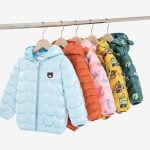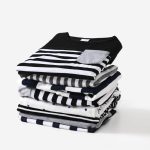Choosing the right clothes for your newborn, infant, or baby can easily become an overwhelming task. Lots of parents mess up while finding out the best wearables based on their babies’ skin. Your baby’s skin is still to reach maturity as it almost instantly reacts to several factors. Detergents, fabrics, and even environmental swings can easily trigger moderate to immense sensitivity.
Therefore, a baby’s skin type holds a critical role in determining your clothing choice as a caring parent. The little one may be sensitive, dry, or even a combination. Making an informed decision subsequently ensures overall comfort and safety. Let’s dive into the skin types to decide on suitable fabrics, clothing designs, and maintenance practices for the baby’s protection and well-being.
Different Baby Skin Types
Before everything else, you must catch up with the numerous baby skin types and how they react to external stimuli. You can categorize the baby’s skin into either of the following types –
-
Sensitive Skin
It’s a highly reactive skin to common irritants, including – dyes, chemicals, or rough fabrics. Sensitive skin often develops rashes, redness, or inflammation upon coming into contact with such materials.
-
Dry Skin
A baby with dry skin tends to experience flakiness, rough patches, and/or itchiness. It’s because the skin lacks the presence of sufficient moisture, initiating a rough or flaky feel. The problem becomes severe during the winter months.
-
Normal Skin
Babies with normal skin generally feature a well-balanced surface, exhibiting a gentle and soft feel. The skin doesn’t contain any kind of visible or instantly detectable dryness, sensitivity, or oils.

Source: Freemalaysiatoday.com
-
Combination Skin
Some babies can have a complex combination of different skin types. For instance – sensitive areas with patches of dry skin indicate such problems. In these cases, the baby requires simultaneous catering to both problems.
-
Oily Skin
Babies with oily skins tend to produce excessive sebum, making the surface slippery. In extreme cases, too much sweating causes dehydration. This skin type is primarily prone to baby acne.
-
Eczema-Prone Skin
Any baby having eczema-prone skin goes through flare-ups, itchiness, and mostly redness. It occurs over one or several environmental factors acting adversely and even the wearing of irritating fabrics.
Choosing Baby Clothes for Sensitive Skin
Babies with sensitive skin need special care with clothing fabrics and even designs. The ultimate goal lies with minimized irritation to promote optimum comfort and breathability.
01. Cloth Fabric
- Organic Cotton – Organic baby clothes are the best choice for any sensitive skin. It’s free from harmful chemicals, pesticides, and other irritating ingredients. Organic cotton is incredibly soft, breathable, and gentle on baby skin.
- Bamboo Fabric – Meanwhile, bamboo fabric is naturally hypoallergenic as well as anti-bacterial. These clothes are also ideal for sensitive skin. The fabric feels softer than cotton, significantly reducing the risk of potential irritation.
- Modal (Rayon) – It’s a particular type of rayon exclusively made from beech tree pulp. Modal is smooth, durable, and moisture-wicking from every aspect. It also prevents skin irritation by prohibiting direct contact with allergens.
However, rayon and polyester/nylon easily trap moisture and heat. It causes skin irritation to trigger allergic reactions. You must avoid these materials, even when your baby doesn’t have sensitive skin.

02. Clothing Design
- Seamless Design – Seams can cause severe friction against the skin, causing rashes and/or irritation. So, you’re to choose between seamless clothing and flat seams to avoid such problems.
- No-Tag/Removable Tag – Tags inside baby boy clothes eventually rub against the baby’s sensitive skin, leading to discomfort. Instead of no-tag wearables, you can consider clothes with easily removable tags.
- Loose Fitting – Putting on tight-fitting clothes increases the friction to restrict the airflow. That’s why you better get sufficiently loose-fitting garments, allowing breathability through air circulation.
03. Clothing Colors
- Dye-Free – Presence of dyes has long been a serious concern in addressing skin sensitivity, even among adults. Go through the labels to ensure that your chosen outfits contain 0% dye.
- Light-Colors – Brightly colored clothes often use harsh chemicals, eventually irritating. Therefore, you better stick to light as well as less colored baby outfits regarding sensitivity.
Choosing Baby Outfits for Dry Skin
A dry skin always requires fabrics that are soft and moisture-retaining simultaneously. Anything harsh, whether it’s weather, detergent, or even bath, can strip the skin of natural oils. Without suitable clothing, you can expect worsening of dryness to hamper the baby’s health.

01. Fabric Choice
- Moisture-Wicking Fabrics – Fabrics that wick away moisture are the best treatment here. Choose organic baby clothes made of cotton/bamboo for protection against dryness or flakiness.
- Natural Silk – Clothes made from natural silk can heavily help retain moisture. It also feels incredibly soft on the skin, making the fabric a good option to confront dried-out skins.
- Wool (Merino) – Merino wool is well-known for its superb moisture-wicking and temperature-regulating properties. However, you must find soft garments to avoid irritation.
02. Cloth Layering
- No Over-Layering – Layering is a great idea to combat dryness. But over-layering leads to internal heat buildups. It simply worsens the problem with excessive sweating for your little girl/boy. So, keep up with light and gentle layers with breathable baby girl clothes or the boys’ ones.
03. Seasonal Concerns
- Winter Wear – For the cold weather, you still need to go for fabrics to trap heat. But choose lightweight to prevent triggering sweat. Use merino wool in winter for its breathability and moisture control.
- Summer Wear – During the hot summer, always keep the clothing lightweight and airy. Rompers/dresses of organic cotton have been the ideal choice. They ensure that the skin stays cool and hydrated.
Parents heavily rely on moisturizers right before making the baby wear clothes. You must get a gentle and hypoallergenic moisturizer for babies. The same goes for soaps for bathing, as experts recommend mild and no-fragrance soaps.
After rubbing the residual water from the baby’s body after his/her daily bath, apply the moisturize for the best results. Only an appropriate choice will lock in the moisture to establish a protective barrier between the skin and the fabric.
Choosing Baby Clothes for Eczema-Prone Skin
Eczema, a highly troublesome disease, causes the baby’s skin to become visibly red, itchy and inflamed. Babies with this particular skin disorder require extra attention in the selection of clothes. It’s because there are many irritants to trigger potential inflammation within minutes.
01. Preferred Fabric
- Super Soft Options – You must get clothing fabrics that are ultra-soft on the touch. Organic baby clothes made of cotton, bamboo, or natural silk are still the best. These materials are gentle on the skin and less likely to induce eczema flare-ups.
- Thermal Regulating Fabrics – Regulation of body temperatures is crucial to prevent excessive sweating. Sweats often exacerbate common eczema symptoms. You should choose bamboo or Merino wool to deal with such problems.
02. Avoiding Irritants
- No Harsh Detergents – Never wash your baby’s clothes using regular supermarket detergents. Instead, pick hypoallergenic and fragrance-free detergents to avoid triggering skin irritation.
- Always Chemical-Free – The clothing you choose for the little one must remain free from harsh chemicals, dyes, and other finishes. Anything chemical may induce untimely sensitivity.
03. Design Considerations
- Long-Sleeved Clothes – Baby boy clothes with long/full sleeves can help protect your baby’s skin from unintentional scratching. They also reduce direct exposure to environmental factors.
- Loose-Fitting Clothes – As mentioned already, tight-fitting garments rub against the skin. And it worsens the eczema symptoms in most cases. Choose loose-fitting outfits to reduce friction.
Protective layering is well-favored to keep the skin free from environmental exposures. It’s obviously useful during the colder months. Use soft/light fabrics for layer clothing, keeping them directly against the skin (bamboo undershirt or top). Put on matching yet breathable outerwear to avoid overheating.
Tips for All Skin Type Outfits
There are some universal hacks to ensure the little one’s comfort and safety with baby girl clothes. Employing the tricks can save valuable time and effort to keep the skin smooth, gentle, and healthy.
- Emphasize Breathability – All babies, regardless of skin type, should wear breathable fabrics. They allow free circulation of air to prevent heat buildups.
- Choose Hypoallergenic – Use clothes labeled as hypoallergenic for sensitive or eczema-prone skin. They barely cause any allergic reactions or irritation.
- Go for Soft Fabrics – Whether the baby has normal/sensitive/dry skin, always prefer soft fabrics. Avoid rough seams, zippers, or tags to irritate the skin.
- Wash New Clothes – Don’t forget to wash every new baby wearable before using. It helps remove all potential irritants (chemicals, dust, or allergens).
- Use Gentle Detergents – Always buy baby-safe and fragrance-free laundry detergents. Anything to come in contact shouldn’t contain harsh chemicals/dyes.
- Remember Temperatures – Try to dress the baby according to the weather/environment. Avoid overdressing as well as underdressing based on conditions.
How Do PatPat Clothes Help Protect Your Baby’s Skin?
Many items within PatPat’s collection feature 100% organic cotton to address sensitivity and dryness. Some options even feature organic bamboo to induce optimized softness. And the hypoallergenic fabrics are completely chemical-free with safe dyes.

There are suitable sets of jumpsuits/onesies, sleeping bags, and socks for disorderly skin issues. And then, you can explore the full collection of baby outfits for indoor/outdoor uses. Discover PatPat’s baby clothes inventory to find the best ones for your needs.
Wrapping Up
Choosing the most suitable baby outfits based on his/her skin type requires a thoughtful approach. You must know the details on fabric choices, clothing design, and even the cleaning practices. Sensitive skin highly benefits from organic/natural fabrics that alleviate irritation. Maintaining softness, breathability, and zero chemical contamination have been the foremost measures to avoid potential reactions.
















Leave a Reply